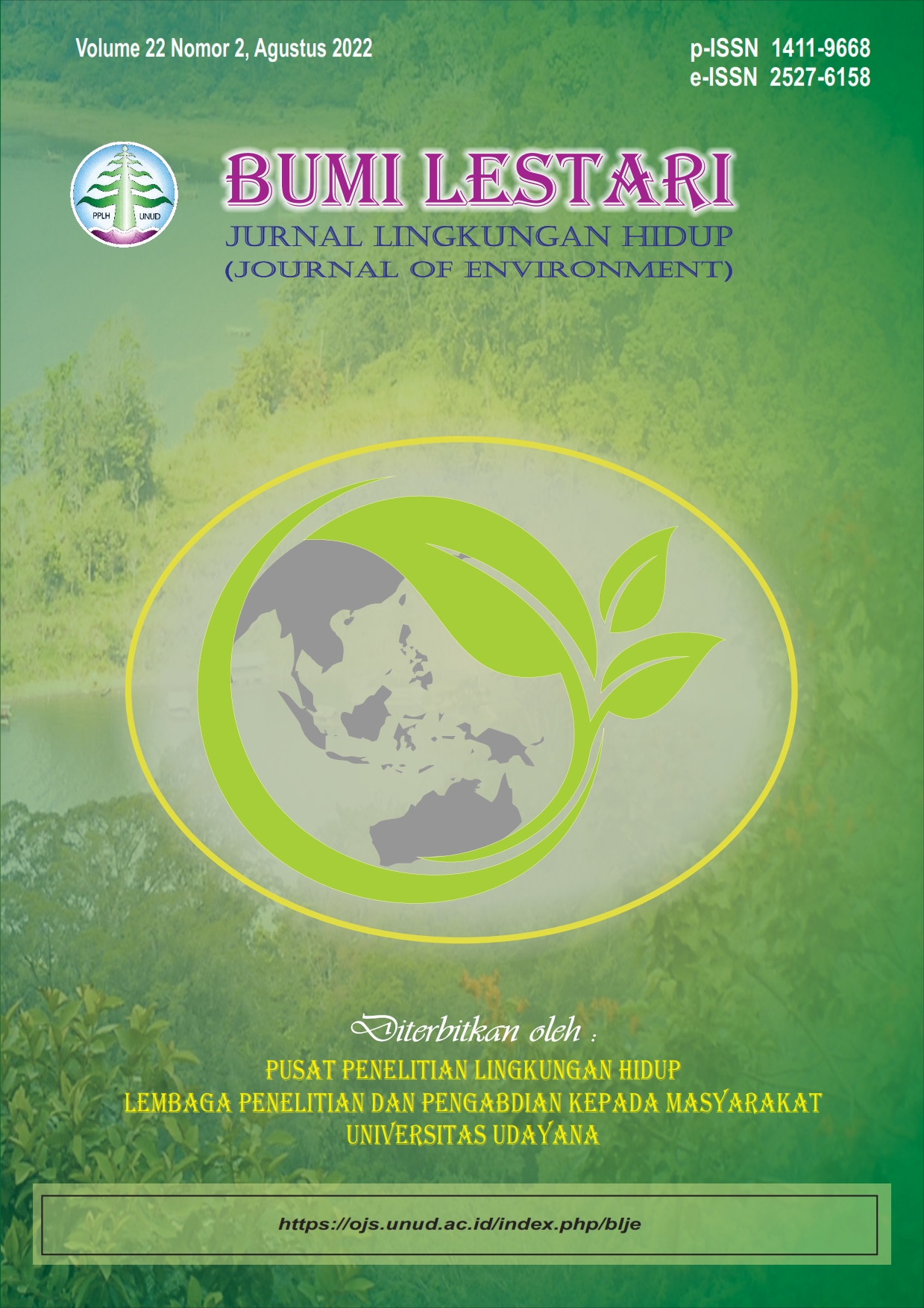Kualitas Air, Kelimpahan Mikroba Dan Laju Pertumbuhan Udang Vannamei (Littopenaeus vannamei) Pada Tahap Pembesaran Menggunakan Sistem RAS dan Konvensional
Abstract
Vannamei shrimp (Littopenaeus vannamei) known as white shrimp is widely cultivated in Indonesia because it has high economic value. Conventional cultivation of vannamei shrimp is often represented by poor sewage treatment, where aquaculture waste is discharged directly causing a decrease in water quality in the environment. This study used 2 different cultivation systems, namely RAS (Recirculating Aquaculture System) and conventional systems (flow-through system). The research located at BPIUUK Karangasem, Bali. Water quality monitoring in each tank was carried out including ammonia, nitrite, TSS (Total Suspended Solid), and the abundance of microbes. Measurement of weight and length starts from the age of 30 days of shrimp with further checks every 7 days. A sampling of water quality, as well as measurements of weight and length, were carried out by random sampling method in each rearing tank. Based on the research data, the quality of aquaculture water using RAS and conventional system were not significantly different. The data on the abundance of microbes obtained in cultivation using RAS and conventional were also not significantly different, where RAS reaching 2.0 x 105 cfu/mL, while in conventional system was obtained 2.1 x 105 cfu/mL of total bacteria count. The growth rate with the average value of ADG (Average Daily Growth) in RAS is 0.88 g slightly higher compared to it is 0.80 g in conventional system. This study concluded that cultivation using RAS and conventional by flow-through system were not significantly different in terms of water quality, microbial abundance, and shrimp growth rate.
Downloads
Authors who publish with this journal agree to the following terms:
- All articles published by Bumi Lestari Journal of Environment and Environmental Reseach Center Udayana University are made available under an open access license worldwide immediately. This means everyone has free and unlimited access to the full-text of all articles published in Bumi Lestari Journal of Environment, and everyone is free to re-use the published material given proper accreditation/citation of the original publication. Open access publication is supported by authors' institutes or research funding agency by payment of a comparatively article processing charge for accepted articles (See Author Fees). Bumi Lestari Journal of Environment and Environmental Reseach Center Udayana University publish articles under the Creative Commons Attribution License.
- Authors are able to enter into separate, additional contractual arrangements for the non-exclusive distribution of the journal's published version of the work (e.g., post it to an institutional repository or publish it in a book), with an acknowledgement of its initial publication in this journal.
- Authors are permitted and encouraged to post their work online (e.g., in institutional repositories or on their website) prior to and during the submission process, as it can lead to productive exchanges, as well as earlier and greater citation of published work (See The Effect of Open Access).





